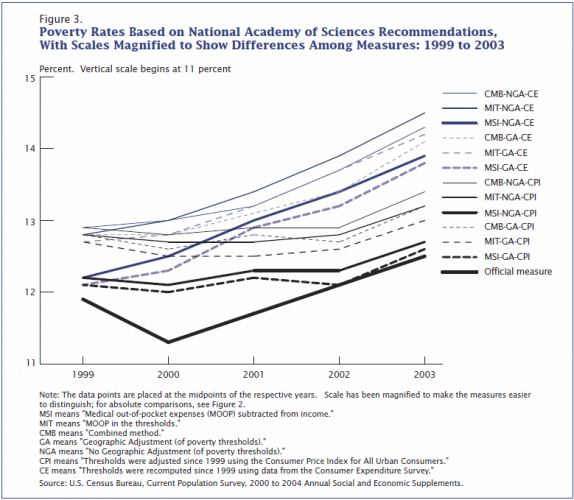Experimental Poverty Measures
Other Alternative Measures from the Census Bureau
Prior to the publication of the Research Supplemental Poverty Measure in 2011, the Census Bureau conducted a variety of studies looking at how income distribution changes when the definition of income is varied to include or exclude different components.
These reports were issued irregularly and, though unofficial and experimental in nature, add to our understanding of poverty.
Alternative Estimates of Poverty
Alternative Estimates of Poverty in the United States: 2003. This report explains how the official poverty measure was computed, how several series of alternative estimates were developed, and how the alternative and official measures offer different profiles of people in poverty.
Frequency and Timespan: one-time report with annual data for 1987 to 2003
Geographic Level of Coverage: National with some regional breakdowns
Publication is available online
Source:Dalaker, Joe, U.S. Census Bureau,Current Population Reports P60-227, Alternative Estimates of Poverty in the United States: 2003, U.S. Government Printing Office, 2005, Accessed 2/14/2012
The Effect of Taxes & Transfers
The Effect of Taxes and Transfers on Income and Poverty in theUnited States. These reports, which are no longer being produced, provide estimates of poverty after accounting for taxes and benefits.
Frequency and Timespan: Annual (ceased publication) with data for 1968-2009
Geographic Level of Coverage: National
Publications and tables are available online
Source:
U.S. Census Bureau, Current Population Reports P60-232, The Effect
of Taxes and Transfers on Income and Poverty in the United
States, U.S. Government Pringting Office,
Washington, DC, 2007. Accessed 2/14/2012











